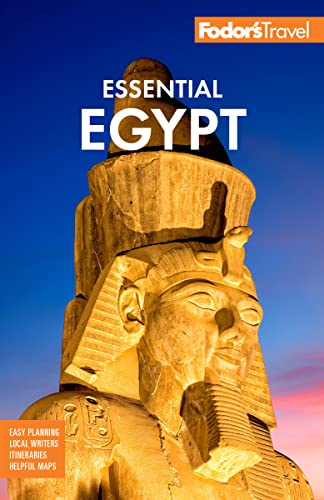At the edge of cultivated land across the Nile from what the ancients called Thebes—the City of 100 Gates—lies their City of the Dead, arguably the most extensive cemetery ever conceived. New Kingdom pharaohs built their tombs here, in the secrecy of the desert hills, with the goal of making them less accessible than the Old and Middle Kingdom royal tombs, which had been robbed even by the time of the New Kingdom. The pharaohs had their sepulchres hollowed out underground, and workers isolated from the East Bank decorated them. These artisans had their own village, temples, and cemetery at Deir al-Medina.
To celebrate their own greatness, as well as the magnificence of the god Amun-Ra, most New Kingdom rulers constructed huge mortuary temples surrounded by palace granaries. These monuments spread across the edge of the fields, as if to buffer the fertile land from the desert. The choice of the West Bank was based on its rugged landscape (which should have kept robbers away), but the overall rationale came from ancient Egyptian religious beliefs. Every night, the old sun set in the west and was reborn the next morning as Khepri, the young sun. By the same principle, the dead were buried in the west to prepare for their rebirth.
The West Bank is not only a royal necropolis, reserved for the sovereign and his family. A considerable number of tombs belonged to Egyptian nobles and other preeminent courtiers. Their sepulchres were of smaller dimensions, but the quality of their decoration was comparable to that found in the tombs of the kings.
Because the tombs of the nobles were dug into the limestone hills at the edge of an open plain, numerous objects were robbed over the centuries. The same destiny was reserved for most of the graves of the Valley of the Kings and the Valley of the Queens, despite the extreme measures that were taken to avoid it. The remarkable exception to this, of course, is the Tomb of Tutankhamun, which archaeologist Howard Carter discovered with its treasures nearly intact in 1922.
To do a full circuit of the various tombs, start making your way around the West Bank at the Valley of the Kings, then move on to the Temple of Hatshepsut at Deir al-Bahri, the Temple of Seti I, the Valleys of the Nobles, the Ramesseum, the Valley of the Queens, and Deir al-Medina. End with the splendid mortuary temple of Ramses III at Medinet Habu.
June through September are only for the brave—come then if you thrive on high heat and sweat. In these months, bringing a large bottle of water is even more essential than at other times. October, November, April, and May are the nicest months.
The best times of day to see the monuments, especially in summer, are in the early morning or in late afternoon—to avoid the high heat of midday and, likewise the waves of sightseers who begin to arrive between 8:30 and 9 am. In winter, the weather is perfectly bearable, and the main obstacle to seeing the monuments is other tourists. Again, early-morning and late-afternoon forays are best for avoiding crowds. After sunset, from December through March, you might want to carry a sweater around town with you; nights along the Nile can get chilly in winter.




